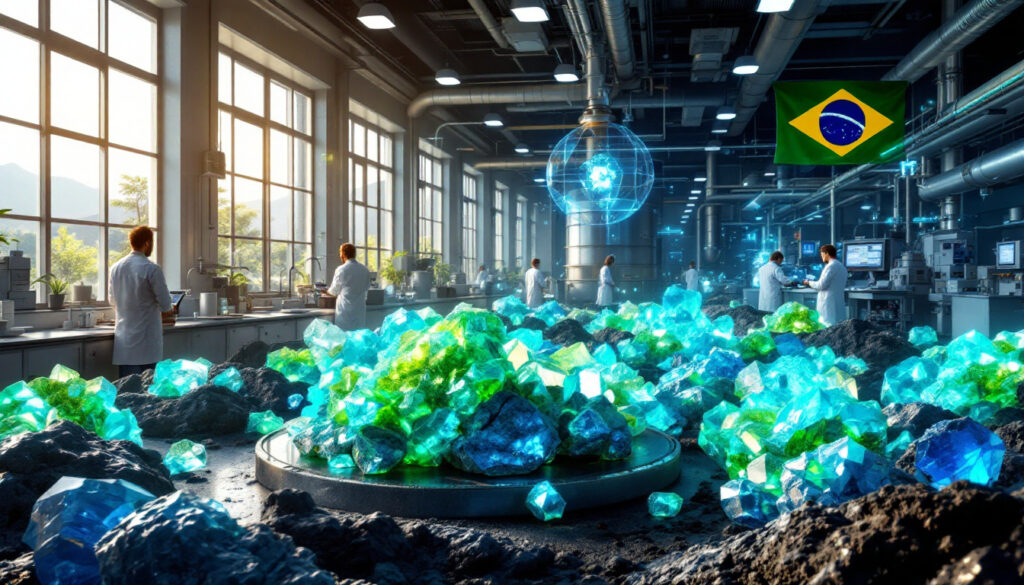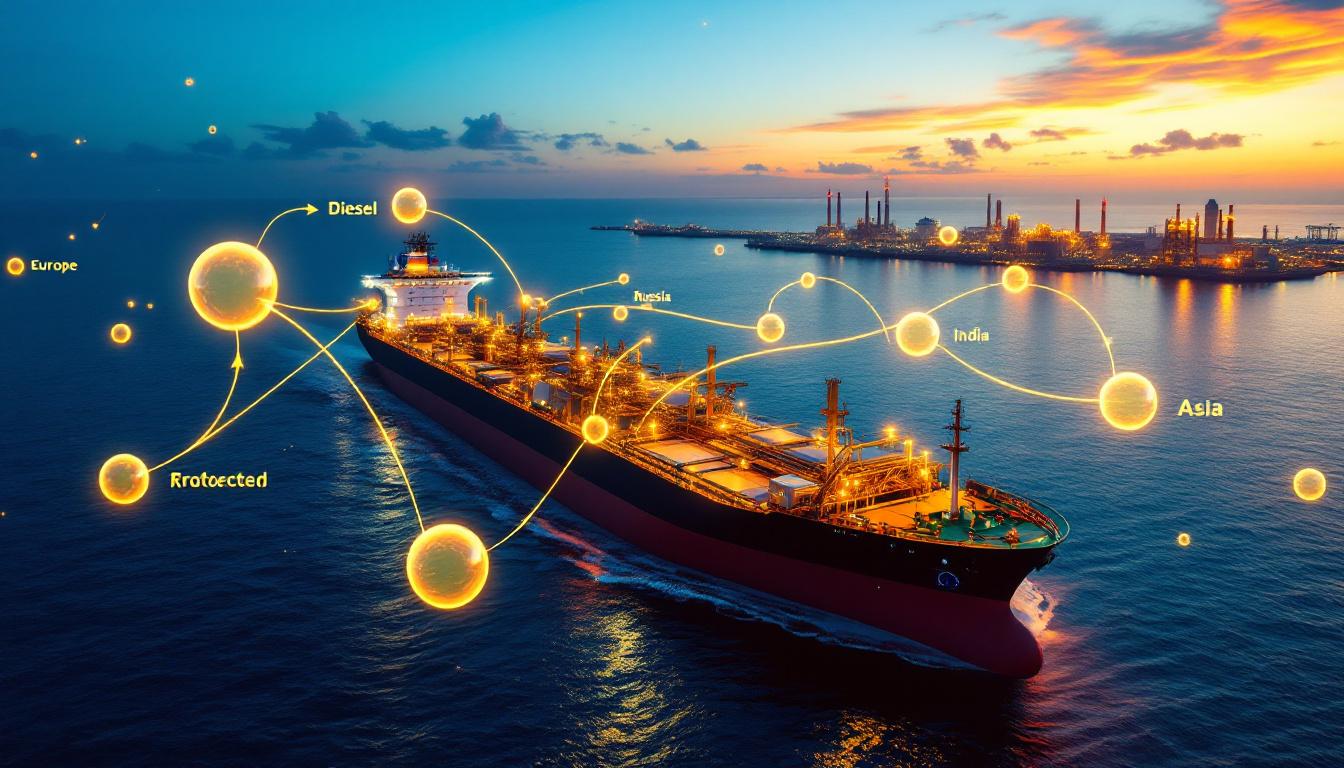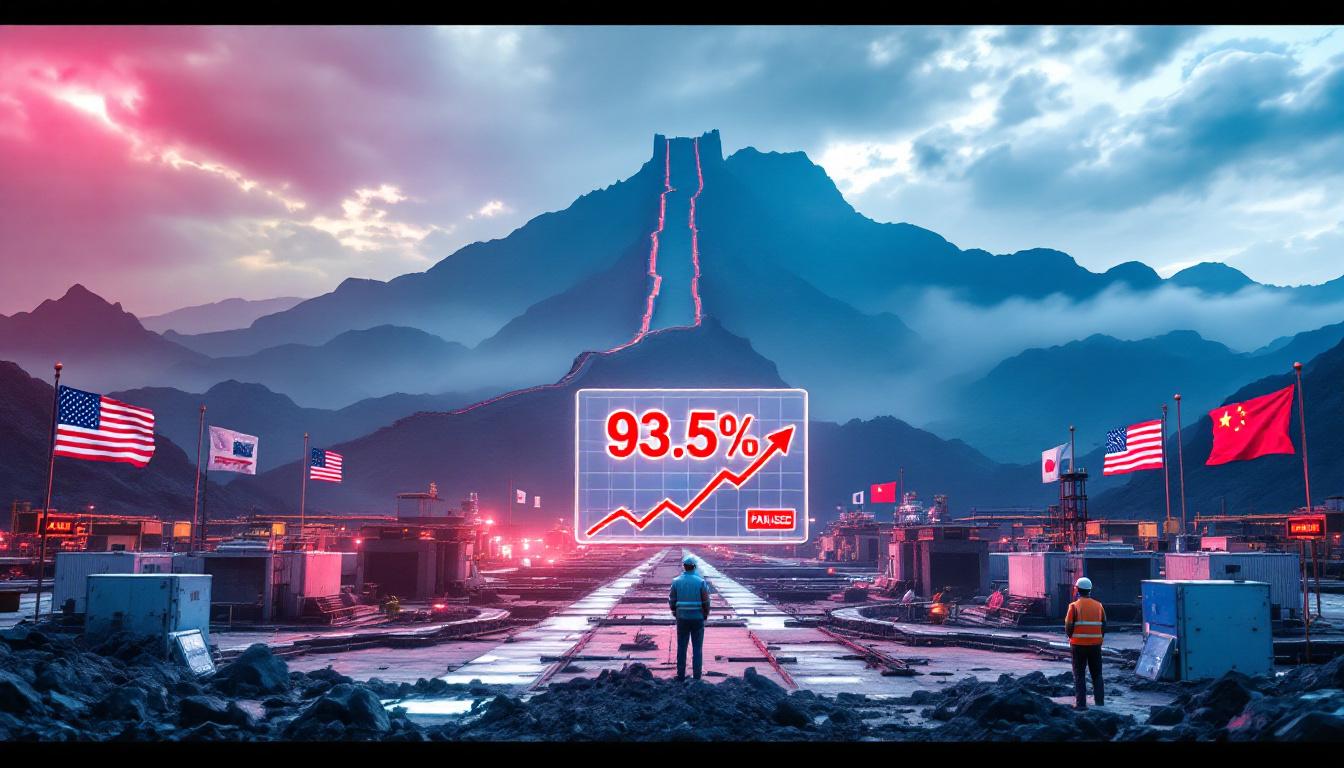What is Aclara’s New Pilot Plant in Brazil?
Aclara Resources has achieved a significant milestone with the inauguration of its semi-industrial heavy rare earths pilot plant in Aparecida de Goiania, Goias, Brazil. This cutting-edge facility represents a major advancement in sustainable mining technology, specifically designed to process heavy rare earth elements (HREEs) that are crucial for mining’s role in clean energy.
The facility boasts impressive processing capabilities, with the capacity to handle 200 tonnes of clay material to produce approximately 150kg of heavy rare earth carbonates. These carbonates contain critical elements such as dysprosium and terbium, which are essential components in permanent magnets used in electric vehicle motors and wind turbine generators.
“Our Carina project will enable the fabrication of approximately 5 million electric vehicles per year,” stated Ramón Barúa, Aclara’s CEO, highlighting the strategic importance of this development for the clean energy transition.
Strategically located in Goias state, the pilot plant serves multiple critical functions in Aclara’s broader development strategy. It validates the company’s optimized closed-circuit flowsheet at a semi-industrial scale, produces samples for potential offtake agreements, and supports the advancement of the larger Carina project – Aclara’s flagship rare earth development in Brazil.
The facility employs Aclara’s proprietary circular mineral harvesting technology, which has received patent protection in multiple countries including Chile, Brazil, the United States, and China, with a second patent currently pending approval. This technological innovation stands at the heart of Aclara’s approach to sustainable rare earth extraction.
How Does Aclara’s Circular Mineral Harvesting Technology Work?
The revolutionary aspect of Aclara’s approach lies in its circular mineral harvesting technology, which fundamentally reimagines how rare earth elements are extracted and processed. Unlike conventional mining operations, this system operates on principles of regeneration and minimal environmental impact.
The process begins with shallow excavation methods that eliminate the need for blasting, significantly reducing disruption to surrounding ecosystems. The extracted clay materials undergo processing without energy-intensive crushing and milling, dramatically lowering the power requirements compared to traditional mining operations.
One of the most innovative aspects of the technology is its closed-loop water management system. The zero liquid discharge design achieves water recirculation exceeding 95%, addressing one of mining’s most pressing environmental challenges – excessive water consumption. Additionally, the process recovers primary reagents with 99% efficiency, minimizing chemical waste and operational costs.
“This technology represents a paradigm shift in rare earth processing,” explains Barúa. “By eliminating tailings dams and implementing comprehensive water recirculation, we’ve addressed the most significant environmental concerns associated with traditional mining.”
The engineering design has been guided by Hatch, a global leader in mining and metallurgical consulting, providing additional credibility to the technical feasibility of Aclara’s innovative approach. The pilot plant serves as a vital validation step, demonstrating that the technology can operate effectively at a semi-industrial scale.
The circular nature of the technology extends beyond resource extraction to consider the full lifecycle of mining operations, including site remediation and rehabilitation, setting new standards for environmental stewardship in the mining sector.
What Environmental Benefits Does the Technology Offer?
Aclara’s approach to rare earth element extraction prioritizes environmental sustainability through several key innovations that significantly reduce the ecological footprint compared to traditional mining operations.
Perhaps most notable is the complete elimination of tailings dams – structures that store waste materials from mining operations and pose catastrophic environmental risks if they fail. The 2019 Brumadinho dam disaster in Brazil, which killed 270 people and caused extensive environmental damage, underscores the importance of this innovation.
The processed clays from Aclara’s operation remain chemically stable, allowing for complete reforestation of mined areas. This stability contrasts sharply with conventional tailings, which often contain harmful chemicals that can leach into surrounding environments.
Water management represents another significant environmental advantage. Through its innovative recirculation system, the technology achieves water reuse rates exceeding 95%, dramatically reducing freshwater consumption – a critical consideration in regions where water scarcity is a growing concern.
The elimination of crushing and milling operations translates to substantially lower energy requirements, reducing both operational costs and carbon emissions associated with power generation. Additionally, the 99% recovery rate of chemical reagents minimizes chemical waste and prevents potentially harmful substances from entering the environment.
“Our process demonstrates that rare earth extraction doesn’t have to come at the expense of environmental health,” notes Barúa. “The pilot plant serves as a demonstration platform for stakeholders to witness firsthand the clean and simple process for producing critical heavy rare earths while safeguarding natural resources.”
This approach aligns with global sustainability goals and increasingly stringent environmental regulations, positioning Aclara as a pioneer in mining industry ESG trends within the rare earth sector.
What Economic Impact Will the Carina Project Have?
The pilot plant represents just the beginning of Aclara’s ambitions in Brazil. The full-scale Carina project promises substantial economic benefits for Goias state and positions Brazil as a significant player in the global rare earth supply chain.
According to Daniel Vilela, Vice-Governor of Goiás, “The estimated investment of R$2.8 billion (approximately $500 million USD) will create thousands of employment opportunities in our region.” This substantial capital injection will generate both direct jobs at the mining and processing facilities and indirect employment through supporting industries and services.
The strategic importance of the project extends beyond regional development. The Carina project is expected to produce materials sufficient for approximately 5 million electric vehicles annually, making it a crucial contributor to global supply chains for clean energy technologies.
Brazil possesses significant rare earth reserves – estimated at 22 million tonnes according to the U.S. Geological Survey – but has historically not been a major producer. The Carina project could transform this dynamic, reducing global dependence on traditional rare earth sources, particularly China, which currently dominates global production with approximately 90% market share.
This diversification of supply has geopolitical implications, potentially reducing supply chain vulnerabilities for industries dependent on these critical materials. For Brazil, it represents an opportunity to move up the value chain, transitioning from a supplier of raw commodities to a producer of value-added materials essential for high-tech manufacturing.
The economic benefits extend beyond jobs and investment to include technology transfer, skills development, and the establishment of Brazil as a responsible supplier of critical materials for the green transformation in mining.
How Does This Fit Into Aclara’s Development Timeline?
The Brazilian pilot plant marks a critical milestone in Aclara’s carefully structured development roadmap for the Carina project and broader business strategy.
The company’s journey to this point includes significant previous development work, including earlier piloting in Chile that processed 25 tonnes of clays from the Carina project. This initial testing provided valuable insights that informed the design and operation of the larger Brazilian facility.
In December 2023, Aclara secured $25 million through a non-brokered private placement, providing crucial funding for the advancement of the pilot plant and ongoing development activities. This financial backing demonstrates investor confidence in Aclara’s innovative approach to rare earth extraction.
Looking forward, the company has engaged Hatch to lead comprehensive pre-feasibility and feasibility studies for the Carina project. These studies will build on data generated from the pilot plant operations, providing detailed technical and economic analyses to guide the full-scale implementation.
The pilot plant will produce high-purity heavy rare earth carbonate samples for two key purposes: supporting the development of future separation plants in the United States and advancing discussions with potential offtake partners. These samples will allow prospective customers to validate the quality and suitability of Aclara’s products for their specific applications.
While specific timelines for completion of the feasibility studies and commencement of commercial production remain confidential, the pilot plant operations in 2024-2025 represent a crucial phase in derisking the project and optimizing the process flowsheet before full-scale implementation.
What Makes Heavy Rare Earth Elements Strategically Important?
Heavy rare earth elements like dysprosium and terbium, which Aclara aims to produce, are classified as “critical minerals” by several governments, including the U.S. Department of Energy, due to their essential role in numerous high-tech and clean energy applications.
These elements possess unique magnetic, luminescent, and electrochemical properties that make them irreplaceable in various advanced technologies. In electric vehicle motors, dysprosium is added to neodymium-iron-boron magnets to maintain their magnetic properties at high temperatures, significantly improving performance and reliability. Terbium serves a similar function and is also crucial in energy-efficient lighting technologies.
Wind turbine generators, particularly those designed for offshore applications, rely heavily on rare earth magnets containing dysprosium to achieve the power density and reliability required for these demanding environments. The defense sector utilizes these elements in guidance systems, radar, and other advanced military technologies.
The strategic importance of heavy rare earths is magnified by supply chain considerations. Current global production is dominated by China, which controls approximately 90% of rare earth processing. This concentration creates vulnerabilities for manufacturing nations, particularly as demand continues to grow with the acceleration of the clean energy transition.
Industry analysts at Adamas Intelligence project that global demand for heavy rare earths will grow at a compound annual growth rate of approximately 8% through 2030, driven primarily by electric vehicle production and renewable energy deployment. This growth trajectory has prompted concerns about potential supply shortages.
Price volatility remains a significant challenge, with dysprosium prices fluctuating between $250-300 per kilogram in recent years. Such price instability complicates planning for manufacturers dependent on these materials.
Aclara’s development of an alternative supply source outside the dominant production regions represents a potential contribution to supply chain resilience in these critical materials, aligning with industrial policies in many Western nations that seek to reduce dependence on concentrated supply sources.
FAQ: Aclara’s Heavy Rare Earths Project
What are heavy rare earth elements?
Heavy rare earth elements represent the higher atomic number elements within the rare earth group on the periodic table, including dysprosium, terbium, yttrium, and others. They are distinguished from light rare earths (like neodymium and praseodymium) by their atomic structure and properties. These elements are particularly valuable due to their exceptional magnetic, luminescent, and electrochemical properties, making them essential components in advanced technologies ranging from electric vehicles to medical imaging equipment.
How does Aclara’s technology differ from traditional rare earth processing?
Traditional rare earth processing typically involves open-pit mining with blasting, followed by energy-intensive crushing and grinding operations. These conventional methods generate significant volumes of waste material that must be stored in tailings dams, consume large quantities of water, and often use aggressive chemical processes.
Aclara’s approach eliminates blasting through shallow excavation methods, avoids crushing and milling operations entirely, implements a zero liquid discharge system with over 95% water recirculation, recovers 99% of chemical reagents, and eliminates the need for tailings dams. Additionally, the process leaves processed clays chemically stable and suitable for reforestation, enabling more comprehensive site rehabilitation.
What is the significance of Brazil in the rare earths market?
Brazil possesses significant rare earth deposits – estimated at 22 million tonnes according to the U.S. Geological Survey – ranking it sixth globally in terms of reserves. However, despite this geological endowment, Brazil has historically not been a major producer in the global rare earths market.
Aclara’s Carina project could transform Brazil’s role in the sector, positioning the country as an important supplier of heavy rare earths specifically. This would diversify global supply chains currently dominated by China and align with Brazil’s strategic interests in moving up the value chain in mineral processing.
The project also represents an opportunity for Brazil to demonstrate leadership in sustainable mining practices, potentially establishing new standards for environmental performance in the extraction of critical minerals.
How will this project impact the electric vehicle industry?
According to Aclara CEO Ramón Barúa, the Carina project’s future production will enable the fabrication of approximately 5 million electric vehicles per year by providing critical elements needed for their permanent magnet motors. This contribution would represent a significant percentage of global EV production, which reached approximately 14 million units in 2023.
Heavy rare earths like dysprosium are essential for maintaining the magnetic properties of neodymium magnets at the high temperatures experienced in EV motors. Without these elements, either motor efficiency would decrease significantly, or alternative – typically heavier and less efficient – motor designs would be required.
By establishing a new source of these critical materials outside the dominant supply regions, the project could potentially help stabilize prices and ensure more reliable access to these components for EV manufacturers, supporting the continued growth of electric mobility worldwide and furthering global decarbonisation in mining efforts.
The success of this project also showcases how digital transformation in mining can lead to more efficient and sustainable extraction of critical minerals needed for the energy transition, as reported by Global Mining Review.
Disclaimer: This article contains forward-looking statements regarding Aclara Resources’ Carina project and pilot plant. Actual outcomes may differ from projections based on various factors including regulatory approvals, technical challenges, market conditions, and other risks inherent to mining development projects. Readers should consider this information as informational rather than investment advice.
Want to Spot the Next Major Mineral Discovery?
Discovery Alert’s proprietary Discovery IQ model instantly identifies significant ASX mineral discoveries, turning complex data into actionable investment opportunities similar to Aclara’s rare earth developments. Explore how historic discoveries have generated substantial returns by visiting Discovery Alert’s dedicated discoveries page.




